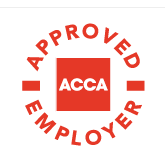Personal Savings Allowance
The personal savings allowance (PSA) was introduced on the 6th of April 2016. Depending on your income, the PSA allows you to get up to £1,000 of interest tax free. The introduction of the PSA has resulted in the majority of people in the UK with income from savings no longer paying tax on this source of income.
Your PSA depends on your adjusted net income, this is the total taxable income before any personal allowances and less certain tax reliefs (examples of which include gross pension contributions and trading losses).
The amount of PSA you receive depends on the income tax band you are in, as detailed below:
Basic rate income tax bank (adjusted net income up to £50,000 for the 2019/20 tax year): tax free savings income £1,000
Higher rate income tax band (adjusted net income between £50,001 and £150,000 for the 2019/20 tax year): tax free savings income £500
Additional rate income tax band (adjusted net income over £150,000 for the 2019/20 tax year): tax free savings income £0
Interest over your personal allowance is taxed at your normal rate of income tax (basic rate tax band: 20%, higher rate tax band: 40%, additional rate tax band: 45%).
Which savings are covered by the allowance…
Some examples of the types of interest that are included in the PSA include interest from: bank and building society accounts, trust funds and peer to peer lending.
Which savings are not covered by the allowance…
Some examples of interest that are not included in the allowance include: savings that are already tax free such as Individual Savings Accounts (ISA’s).
For tax on children’s accounts and foreign savings there are different rules that apply.
For more information, please do not hesitate to contact us or visit
https://www.gov.uk/apply-tax-free-interest-on-savings

You may also like…
What did we learn from the Budget: pensions
60% pension relief
Allowable business expenses
Capital Gains tax update
Student loans
Undeclared rental income







